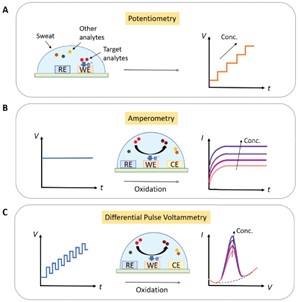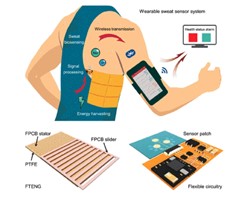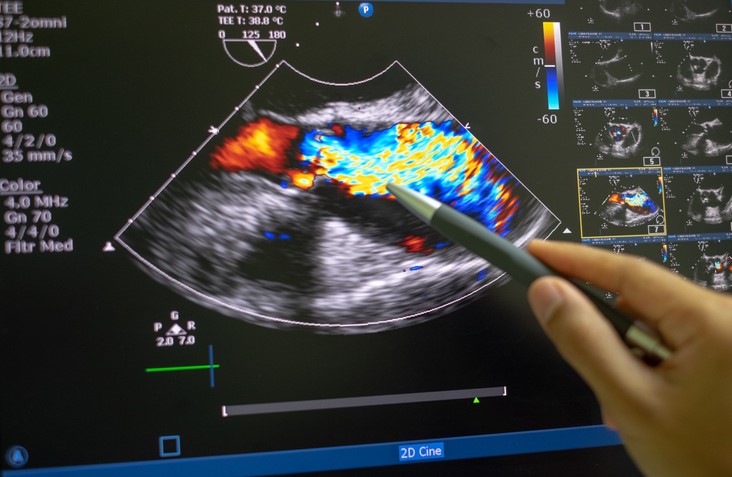The rise of wearable technology has permeated the world in the last decade. Between 2014 and 2020, the number of wearable activity trackers shipped worldwide increased by almost 1500%, translating to a global spend of US$2.8 billion in 2020. The global fitness tracker market is expected to reach US$91.98 billion by 2027. Studies have shown that fitness trackers, pedometers, and smartwatches motivate people to exercise and take more interest in their health.
Thanks to rapid technological innovation over the last decade, a wide range of wearable devices have emerged—advancing healthcare, diagnostics, and sports monitoring. The growing interest in personalized monitoring has led to the rapid development of reliable, accessible, and continuous sensing systems. While several biofluids have been widely targeted in research—including saliva, tears, and interstitial fluid (ISF)—sweat is the most ideal because of its non-invasive and on-demand generation. Sweat also contains a wealth of biomarkers—metabolites, electrolytes, metal elements, hormones, and other large molecules (ethanol, nicotine, therapeutic drugs, etc.). Miniaturization and multiplexed platforms have allowed the simultaneous detection of multiple biomarkers indicative of underlying health conditions from a single drop of sweat.
In a recent article in IEEE Sensors Journal, a team of researchers reviews current research on the development and application of electrochemical (EC) sweat sensors and self-powered systems for wearable applications. Many modern laboratory-based techniques can be used to analyze biological markers in biofluids. However, these techniques are typically associated with sample processing, trained lab operators, or challenges in miniaturization. EC sensing offers an alternative approach to the analysis of biofluids with the advantages of fast sample analysis, multiplexed platform, ease of processing, low cost, and miniaturization that are not found in competing portable methods.
EC Sensing for Wearable Devices
The functional interpretation of the captured measurements plays a vital role in the commercialization of wearable sweat-sensing devices. Researchers have focused on developing biosensors with high sensitivity, wide limit-of-detection, and long-term stability for the detection of analytes from sweat. Electrochemical sensing is a well-established sensing technique and advantageous when widely adopted in fabricating sweat detection platforms, due to its high sensitivity, easy miniaturization, and low cost. For this review, the researchers focus on three main types of EC sensors: Potentiometric, Amperometric, and Differential Pulse Voltammetric.

Types of Electrochemical (EC) sensors
Self-Powered Sensing for Wearable Devices
Powering biosensors and transmitting signals to a smart device are obstacles that need to be overcome to advance wearable technology. Signals measured by biosensors require interfaces (e.g., Bluetooth, RFID, or near-field communication), electronic circuits for signal transmission, and data processing. Battery lifetime, size, and comfort have become problems for the continuous usage of flexible wearable devices. Innovative power sources, such as biofuel cells or energy harvesting from novel materials can provide a seamless and comfortable user experience.

Wearable sweat sensor system
What’s Next for Sweat Monitoring
Health assessments through physiological and biological monitoring can provide insight into an individual’s lifestyle and health conditions. Continuous, real-time sweat monitoring is predicted to be the next-generation wearable product for sports and health monitoring applications. Managing disease, tracking athletic performance and recovery, monitoring diet, and managing workplace safety can be done through analyzing ions from a drop of sweat, in combination with other physiological assessments, such as heart rate and body temperature.
The long-term stability and repeatability of sweat-sensing materials, especially enzyme-based ones, need to be improved for prolonged applications. Biosensors, big data, advanced artificial intelligence, and machine learning algorithms go hand in hand to provide a complete solution in wearable applications. With the rapid development of biosensing technology, users can take the lead with self-monitoring for a proactive lifestyle.
View the full-text article on IEEE Xplore. Read the first page for free. Full article available with purchase or subscription. Contact us to see if your organization qualifies for a free trial.
Interested in learning more about Wearable Technology? IEEE offers continuing education with the Machine Learning: Predictive Analysis for Business Decisions and Artificial Intelligence and Ethics in Design course programs.





